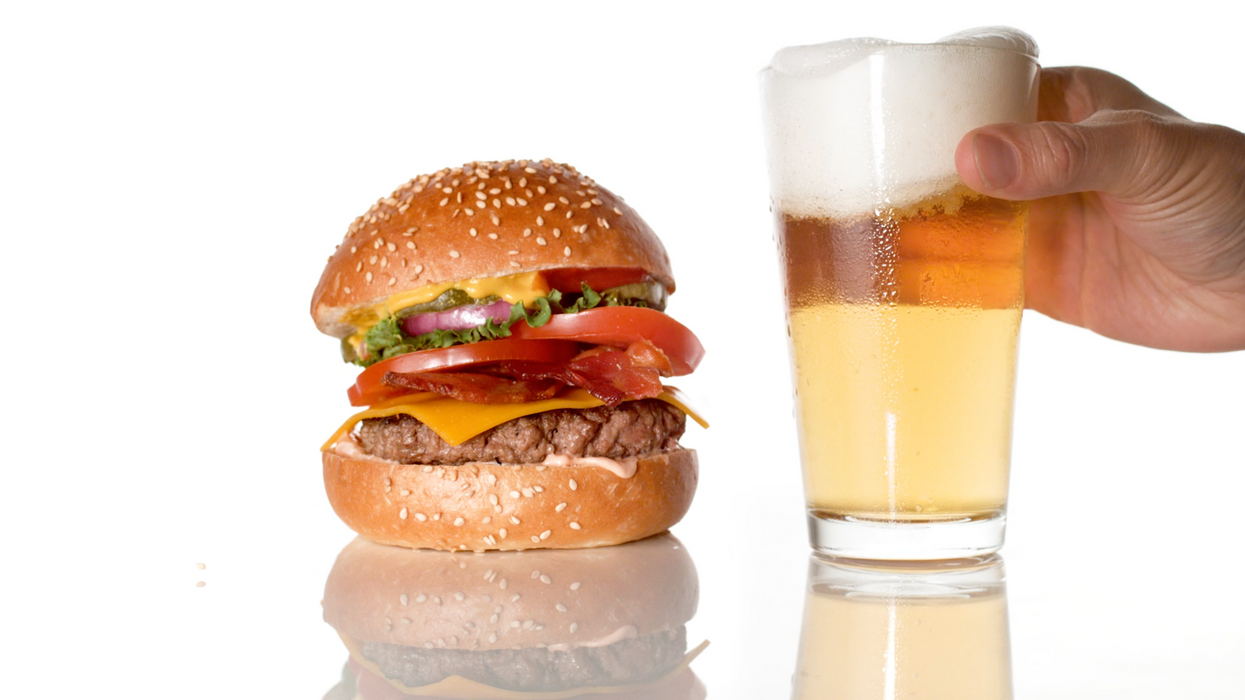How to Capture a Slow-Mo 'Burger Drop' with Robots & a Phantom Flex4K Camera
How do you make a bacon cheeseburger look more delicious?

We're all familiar with fast food commercials where a mouth-watering burger drops from several inches inches in slow motion, its ingredients bouncing and jiggling and dripping all over the place. Well, Steve Giralt, a NYC-based photographer, director, and visual engineer, has shared his secret sauce on how he pulled off this highly complicated and intricate shot using specialized rigs, a high-speed Phantom Flex4K camera, and a robot arm—and it's nothing short of amazing.
Before we get into how he did it, here's his finished "burger drop" shot:
Beautiful! Resplendent! Gimme a burger! But what's even more impressive is the process Giralt went through to capture this shot. His camera setup was pretty standard in terms of shooting high-speed content: he filmed on a Phantom Flex4K at 1000fps, which was mounted to a robotic arm. However, the two rigs he designed specifically for the shoot, as well as the control system he created are the real stars of the show.
Apart from the two 3D printed mini catapults he made for the ketchup and mustard bit, he designed a special rig that suspended each of the burger ingredients in the air using rubber bands. Servos would then cut the bands at a specific time during the shot, allowing the buns, patty, cheese, lettuce, bacon, tomatoes, pickles and onion to fall at the same time—and hopefully stack up neatly at the bottom. Giralt also had to built P.A.T.R.I.C., an Arduino-based timing control system that served as the brain of the shoot, allowing him to control every even down to the millisecond.
Here is a behind-the-scenes look at Giralt's amazing "burger drop" shot.
Unless you work in a well-funded studio, you're probably not going to be able to capture a shot like this—mostly because you'll have to pay about $4000/day to rent a Phantom Flex4K and then you'll have to hunt and kill the dreaded Giant Robot Crab and harvest one of its robocrustaceous arms.
However, there's still plenty to learn from Giralt's work here, particularly when it comes to how you choose to work in the "world" of your project. He shares an interesting thought about working with one of the fundamental element of cinema, time, and how things change when it becomes warped through high-speed filmmaking:
As for this crazy burger sequence, it all happened in less than half-a-second of real time. The most difficult part of this project, I think, was learning how to work in a world where events happen in fractions of a second. Thinking in microsecond intervals is really intense; when you start looking closely, a lot can happen in 0.001 seconds… never mind 0.1 seconds.
And that's a beautiful thing to think about, especially considered he didn't really have to capture this shot in-camera. He could've used CGI for the whole thing (or even just some of it), but instead he decided to get practical and let the burger fall where it may. Honestly, that care and respect for the art of technology really shows.
Sure, I could have done this burger video with CGI or used some expensive post production process; but I really wanted to try to create something that pushed the limits of technology while still staying true to my love for shooting things as perfect as possible in camera. CGI food is just not real food.
To learn more about Giralt's process, and to check out images of his specialized rigs and designs, check out PetaPixel article.

 No Film School's coverage of
No Film School's coverage of 









